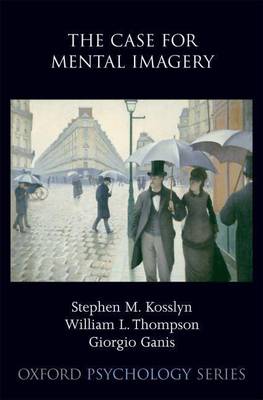Oxford Psychology
1 primary work
Book 40
The Case for Mental Imagery
by Stephen M. Kosslyn, William L Thompson, and Giorgio Ganis
Published 1 January 2006
Mental imagery has always been a controversial topic in psychology. The major problem has been the inherently private nature of mental images, which has traditionally prevented objective assessment of their structure and function. Between researchers in cognitive psychology and computer-science, a debate, now commonly called 'the imagery debate' arose about what exactly constitutes a mental image. Although the imagery researchers in cognitive psychology assumed that
mental images were in fact images, and hence often compared them to pictures, the computer-science researchers relied on language-like internal representations that are easy to implement in programming languages. On the side of the computer-science researchers, Zenon Pylyshyn has argued that the
picture metaphor underlying theoretical discussions of visual mental imagery is seriously misleading, particularly because it suggests that an image is an entity to be perceived. Pylyshyn has claimed that to describe what we know adequately, we must posit mental structures that describe, that are conceptual and propositional in nature, rather than sensory or pictorial-symbolic descriptions, rather than images. On the side of the mental-imagery researchers, Stephen Kosslyn has argued that the
idea that mental depict, as opposed to describe, is not only defensible, but most consistent with the emerging body of data about imagery. In this volume, Stephen Kosslyn revisits the debate some 30 years later, when it has evolved to bear on a much more general concern: the relation between mental
phenomena and underlying natural substrates. Kosslyn summarises the arguments and positions, puts them in context, and shows how modern neuroscientific methods can illustrate the representational nature of mental imagery.
mental images were in fact images, and hence often compared them to pictures, the computer-science researchers relied on language-like internal representations that are easy to implement in programming languages. On the side of the computer-science researchers, Zenon Pylyshyn has argued that the
picture metaphor underlying theoretical discussions of visual mental imagery is seriously misleading, particularly because it suggests that an image is an entity to be perceived. Pylyshyn has claimed that to describe what we know adequately, we must posit mental structures that describe, that are conceptual and propositional in nature, rather than sensory or pictorial-symbolic descriptions, rather than images. On the side of the mental-imagery researchers, Stephen Kosslyn has argued that the
idea that mental depict, as opposed to describe, is not only defensible, but most consistent with the emerging body of data about imagery. In this volume, Stephen Kosslyn revisits the debate some 30 years later, when it has evolved to bear on a much more general concern: the relation between mental
phenomena and underlying natural substrates. Kosslyn summarises the arguments and positions, puts them in context, and shows how modern neuroscientific methods can illustrate the representational nature of mental imagery.
